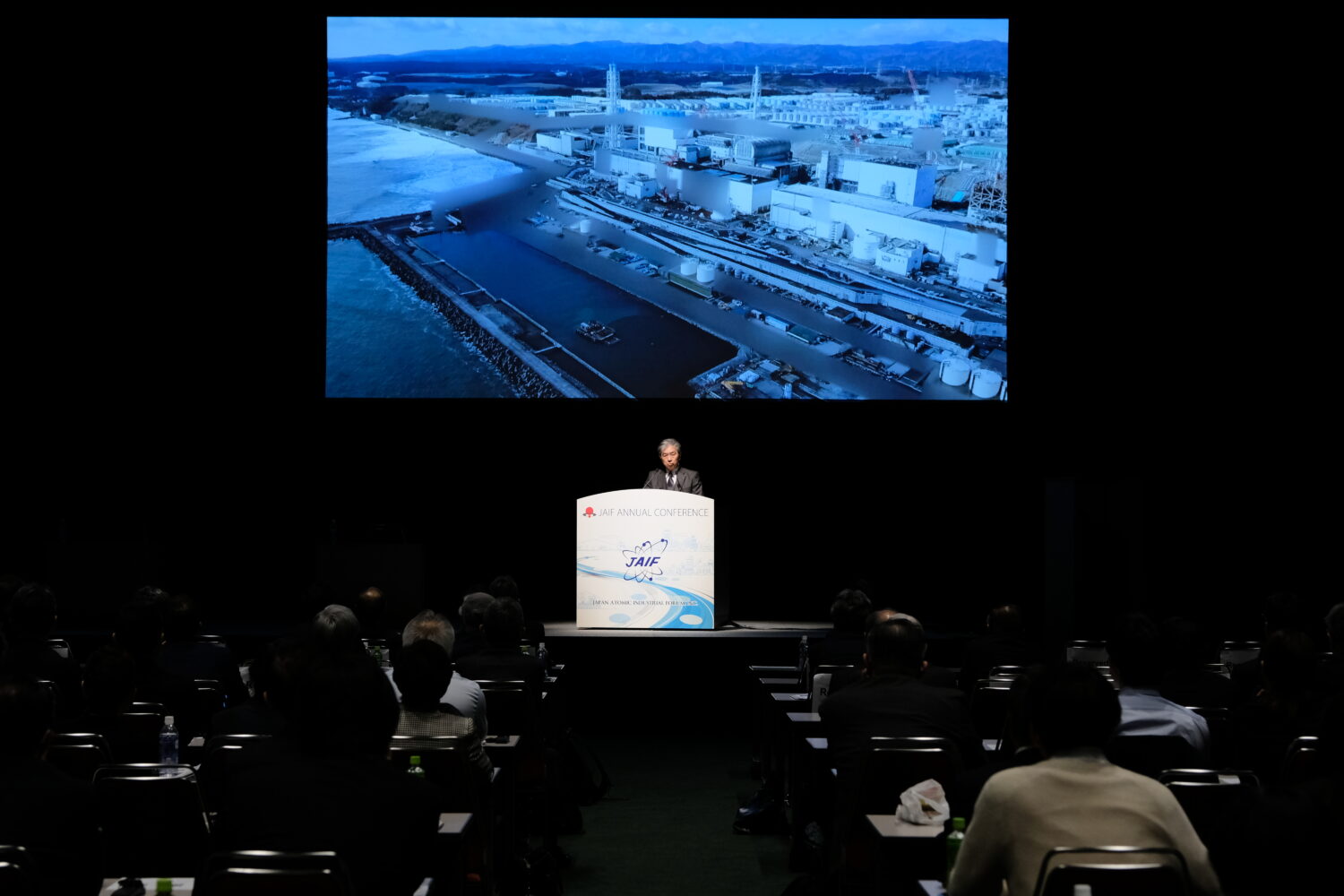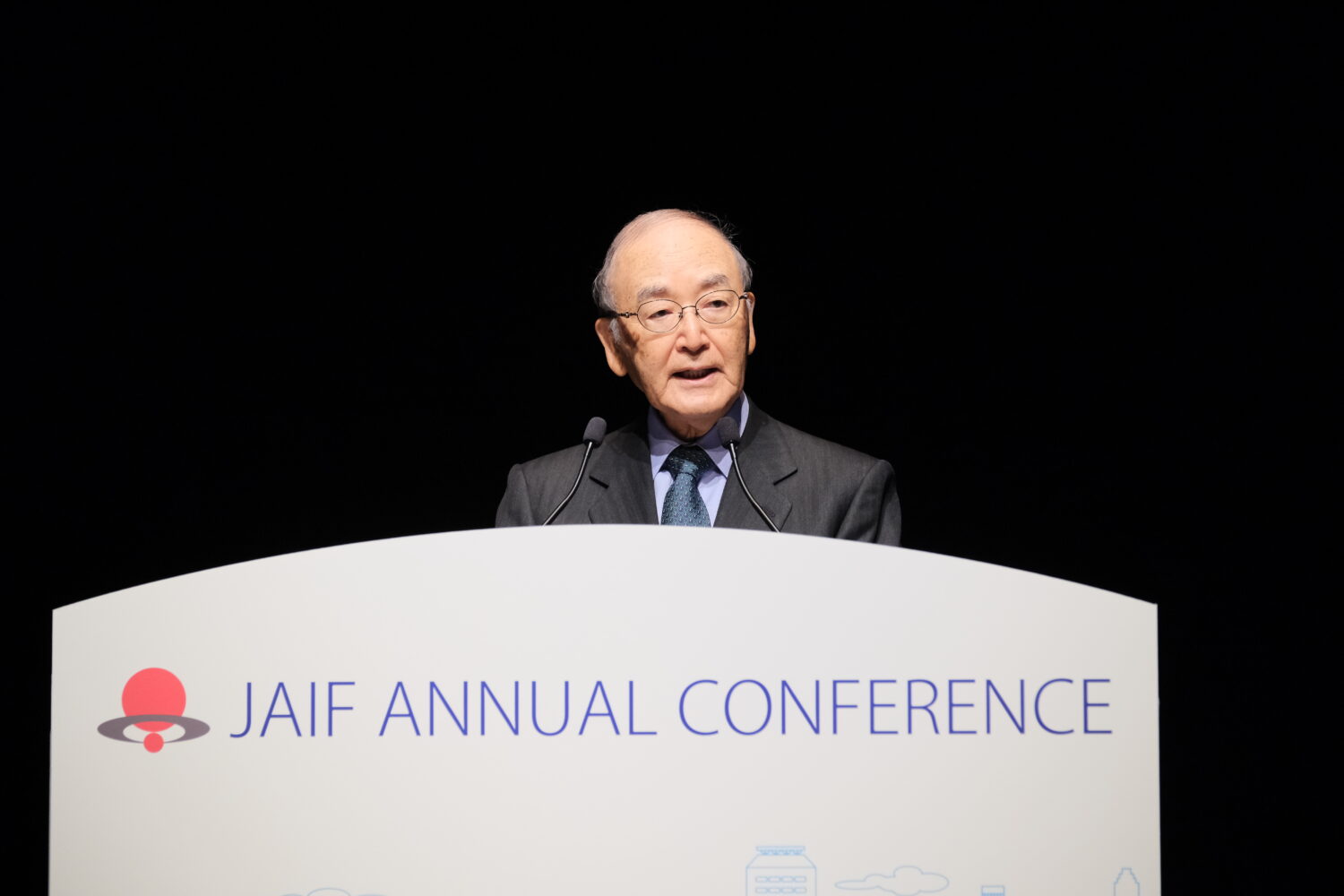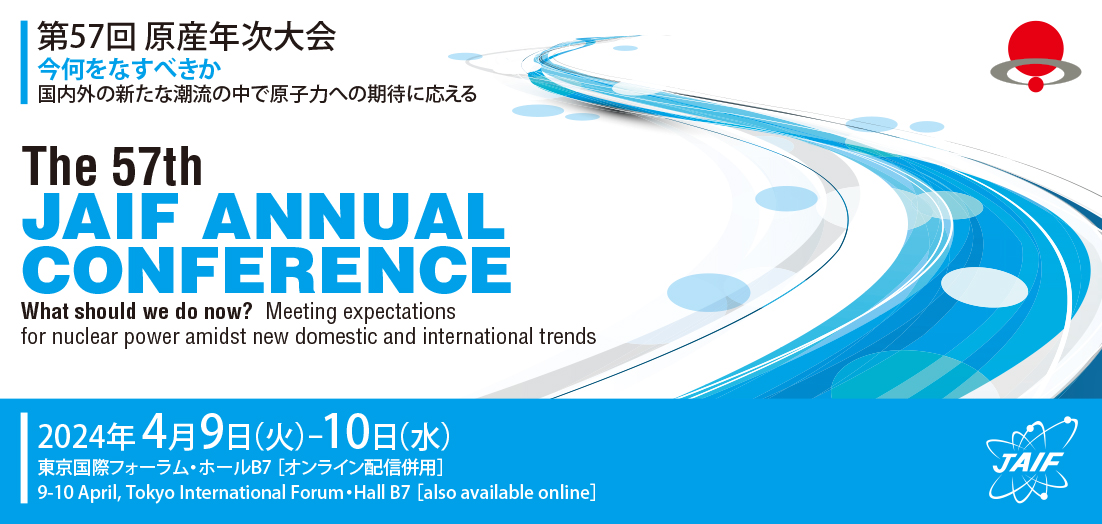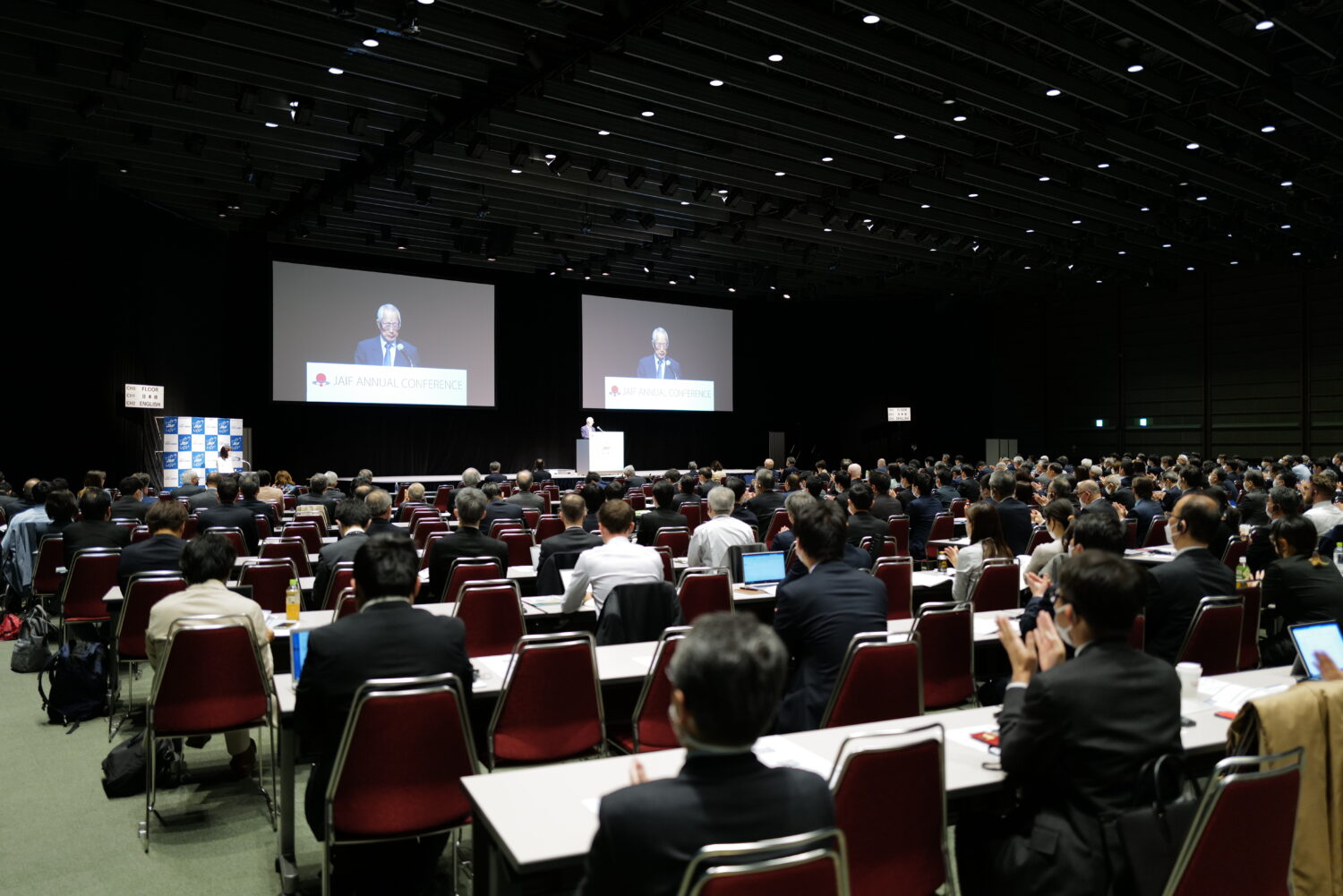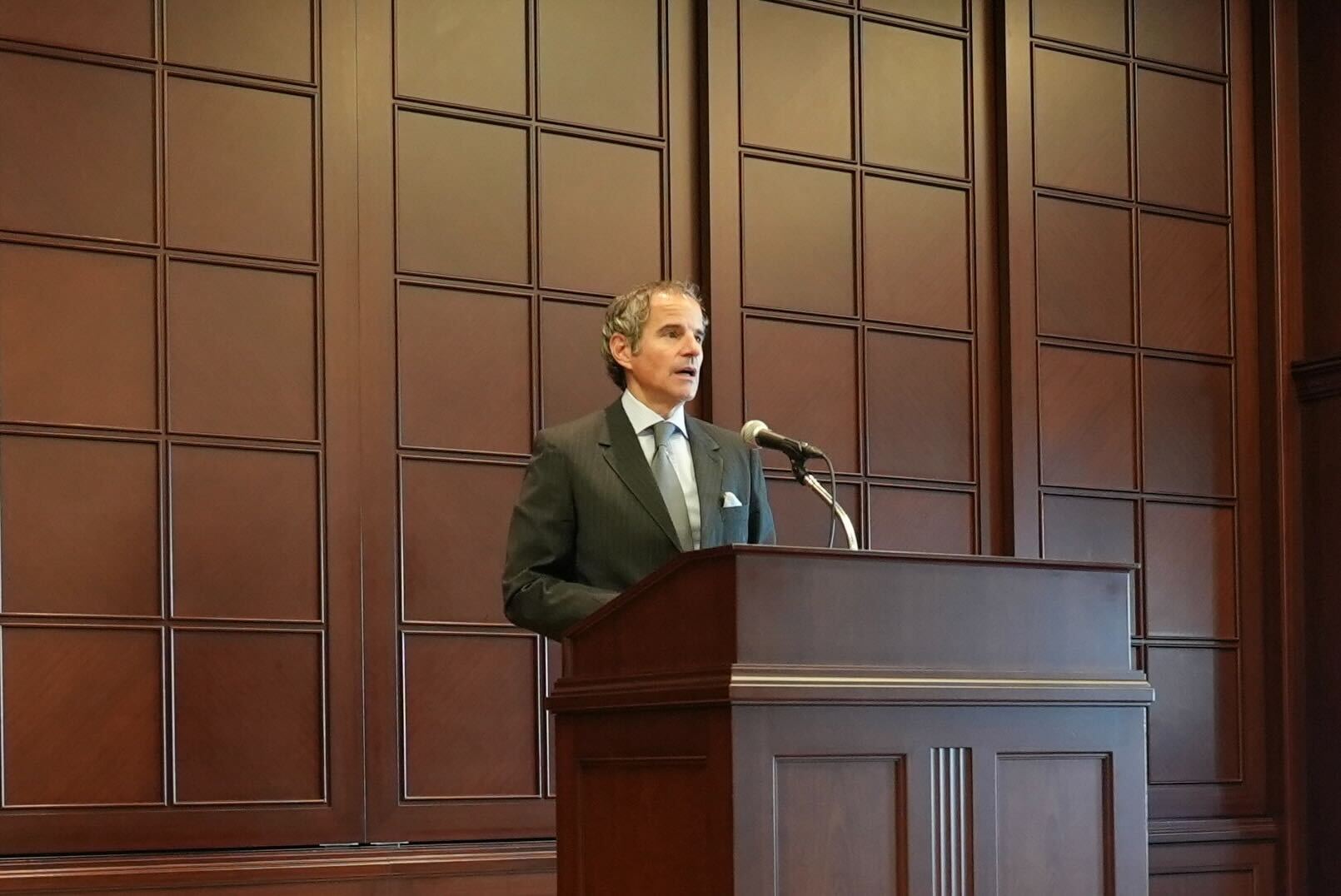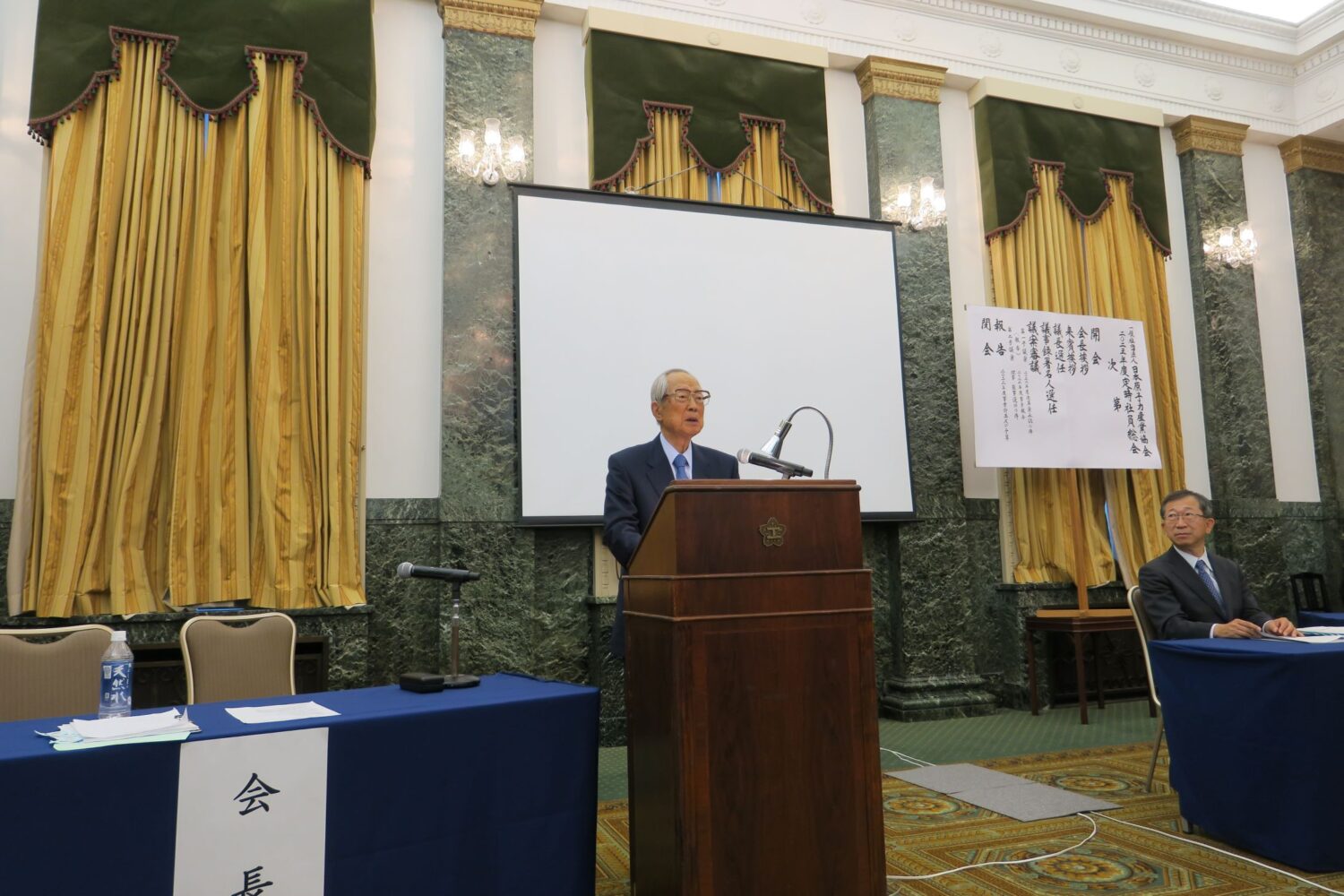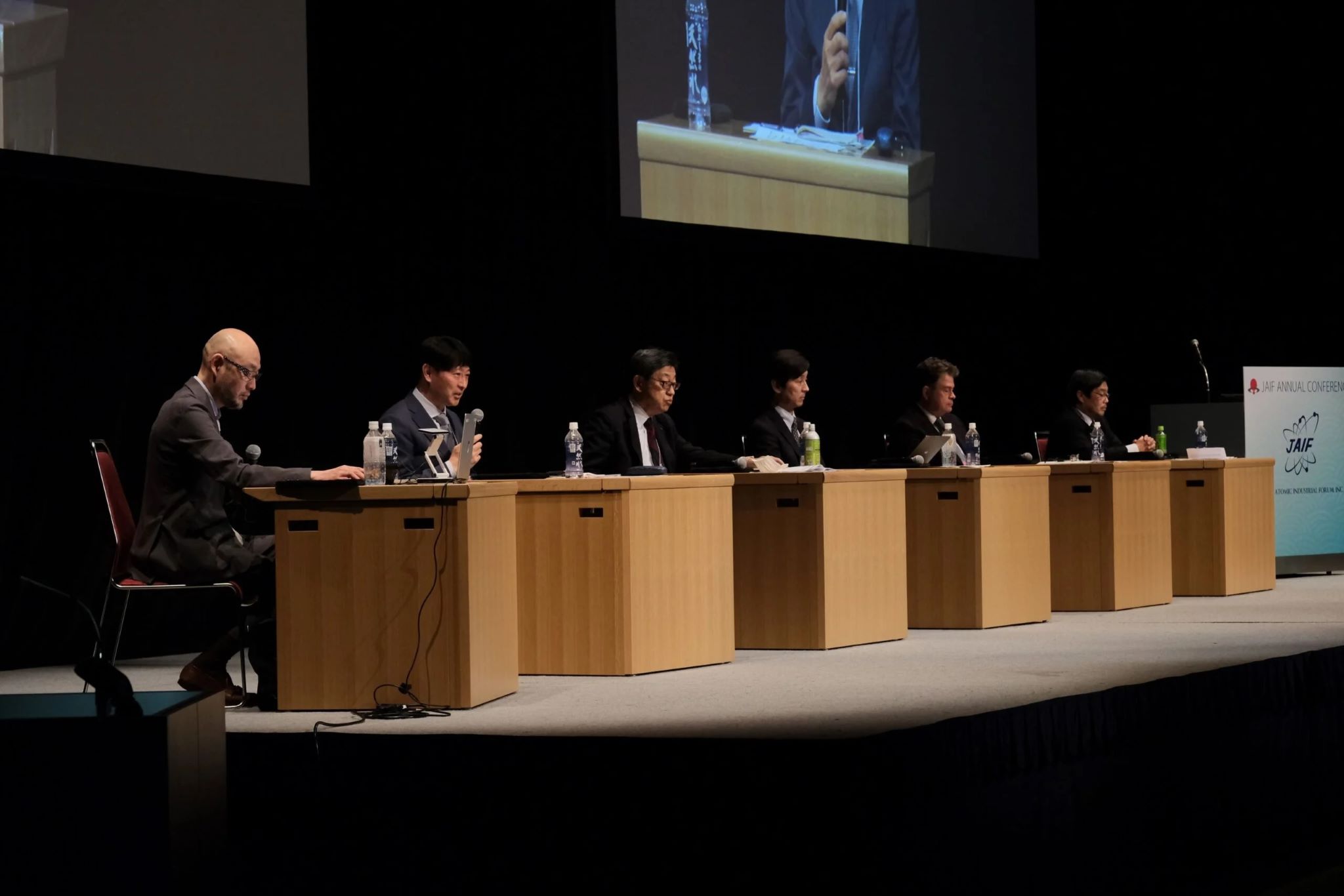According to Ichikawa, the European economy stagnated due to the monetary crisis after the financial crisis instigated by the bankruptcy of Lehman Brothers in September 2008, making the target of reducing greenhouse gas emissions by 40% by 2030 appear achievable without much difficulty. In 2019, Ursula Gertrud VON DER LEYEN became president of the EC and raised the reduction target to 55%. CO2 prices in the EU Emissions Trading System (EU ETS) soared, confronting European companies with surging costs and other problems. Importantly, Europeans regarded the situation as an opportunity for investment. If overall production costs for European companies could be reduced, their competiveness would improve against international competition. In the United States, industries are moving quickly to catch up with Europe. Japan has already been left behind.
After all the presentations in Session 1 had been made, moderator Ichikawa offered comments. Toward slowing the pace of global warming, he said, we are obliged to commit to efforts over the ultra-long term. He pointed out that energy security was now recognized as integral to economic security, under which circumstances nuclear energy is a key element when thinking about how to maintain the economy. He concluded by saying that it was important for the government and industry to continually explain nuclear power to the public, in order to obtain understanding and support from a broad range of people.
◇ ◇
The first specialist, SADAMORI Keisuke, Director for Energy Markets and Security at the International Energy Agency (IEA), delivered a keynote presentation entitled the “Role of Nuclear Power in Decarbonization of Energy Systems.”
Summary of Sadamori’s Presentation
To achieve the target of the IEA’s “NZE” scenario—net-zero CO2 emissions by 2050—installed nuclear capacity will double by 2050. That is to compensate for intermittent renewable energies, and means that nuclear industries around the world will have to conduct projects to construct new nuclear reactors on time, and on budgets. Additionally, in economically advanced countries, costs for ongoing projects will have to be cut almost in half.
In the process of realizing the NZE scenario, world capital investment in nuclear power will have to be tripled over the coming decade; in contrast, existing installed capacity in economically advanced countries is likely to fall rapidly. Since 2019, extensions of operating lifetimes are being approved at existing nuclear power plants (NPPs) generating more than 50,000MW, which will be of major help in the transition to more affordable, clean energy.
With less installed capacity, it becomes harder to realize net-zero CO2 emissions. If adding new reactors and/or extending operating lifetimes of existing reactors does not occur, the additional burden on consumers is expected to be more than USD20 billion a year. Supply chains will be under heavy pressure. To compensate for a shortage of one nuclear installation generating 1,000MW, an additional 3,500MW of capacity from non-nuclear sources is required.
Indeed, given that nuclear power can generate non-carbon electricity, heat, and hydrogen, and that, as its role expands, costs will become even lower than in the NZE scenario, its share of the power market may be even higher.
The following are key conclusions:
- In countries where nuclear energy is accepted, it plays a significant role in the efficient transitioning to clean energy.
- With less nuclear power generation, the transition becomes progressively harder, and more costly.
- It is necessary both to promptly increase investment in nuclear energy and extend the operating lifetimes of existing reactors.
- The nuclear industry must implement projects for the construction of new reactors according to planned schedules and within budgets.
- The structure of the electricity market must reflect the value of low-carbon, adjustable-output power sources.
- Each government must carry nuclear safety regulation not only effectively but also efficiently, as well as resolve radioactive waste issues and create a system of financial support toward construction of new reactors.
- To achieve net-zero CO2 emissions, technological reform will be required in many areas, and small modular reactors (SMRs) are a promising technology.
- In future power systems with high percentages of renewable energies subject to output fluctuations, thermal power plants will flexibly cover most seasonal variations.
- Energy mixes of multiple low-carbon sources, including nuclear power, will be effective in controlling seasonal fluctuations of supply and useful in ensuring guaranteed supplies.
◇ ◇
Following Sadamori’s remarks, CHUNG Bum Jin, professor in the Department of Nuclear Engineering, Kyung Hee University, South Korea, made a presentation entitled “Challenges and Opportunities of Korean Nuclear Industry.”
Summary of Chung’s Presentation
South Korea, with its shortage of natural resources, depends on imports for 95% of its energy, which in turn account for 25% of total national imports. More than 70 percent of the approximately 10 billion dollars of annual energy imports is spent on oil.
As of 2023, 25 commercial nuclear reactors are in operation and three are under construction in the country. During the administration of former President MOON Jae-in, plans were suspended to build two nuclear units each at two new sites. Now, however, construction of the Shin Hanul 3 and 4 plants—which had been halted for more than four years under the Moon government’s phase-out policy—will be resumed. Generation costs are about USD60 per MWh, much less than the USD80 and USD120, respectively, for coal-fired and LNG-fired power plants. The country will remain pressed on resources, however, because the costs of coal and LNG have doubled and there are few suitable locations for renewables facilities.
Former President Moon had declared the nuclear phaseout suddenly at the closing ceremony for the Kori 1 NPP in June 2017: usage rates of nuclear energy and coal were to be reduced, while those of renewables and LNG were to be increased. Some brave specialists, experts, and university professors protested the policy and debated it publicly. Construction of Shin Kori 5 and 6 was then resumed, but the Korea Electric Power Corporation (KEPCO) suffered losses and nuclear supply chains were also damaged. At the same time, the limitations of renewable energies were reconfirmed—namely, that they may function only intermittently, and that output cannot be flexibly adjusted.
With YOON Suk-yeol having won the presidency, there is growing optimism within the Korean nuclear industry for export opportunities. More people affirm that nuclear is clean energy, and 70 percent of the public expresses support for the continuation of nuclear power. President Yoon has promised that the country will be a global leader in clean energy technology by increasing its competitiveness through the construction of large-scale units and SMRs. He plans to use nuclear energy as a baseload power source while also increasing renewable energies in harmony.
The plan for achieving net-zero CO2 emissions by 2050 will not be possible unless renewable energies are replaced by nuclear energy. Meanwhile, some people in the country are strongly opposed to nuclear energy and many issues remain, including the disposal of spent fuel. Yet, the nuclear share in South Korea is expected to increase to the level of 30% or more given the necessities of responding to the climate crisis and strengthening energy security. Moreover, because there is demand in other countries for reactors to replace existing ones, and because countries are seeking to secure sustainable economic development, there will be opportunities for exports and for expanding the development and deployment of SMRs.
◇ ◇
The next person to speak at Session 1 was Liisa HEIKINHEIMO, Deputy Director General of the Ministry of Economic Affairs and Employment (MEAE), Republic of Finland. Her presentation was entitled “Nuclear Energy—a Part of the Energy System in Finland.”
Summary of Heikinheimo’s Presentation
As electrification of society and industry progressed in Finland and the importance of energy self-sufficiency was recognized, nuclear power came to be regarded as a key, highly reliable power source emitting no carbon. During 2022, energy supplies from Russia were reduced step by step, making guaranteed supplies even more important.
Total electricity consumption in Finland in 2022 was 86.0TWh, 87% of which was generated by non-carbon power, including renewable energies. In May 2022, electricity imports from Russia (about 10% of the total) were suspended, but, in 2023, Olkiluoto-3 (1,720MW) began operation. Nuclear power accounted for about 30% of the total electricity consumed in the country in 2022. Many wind power plants are under construction or being planned.
Primary energy imported from Russia accounted for 34% of Finland’s total electricity consumption in 2021, but in May 2022, the Russian gas industry stopped supplying natural gas to the country. That summer, Finnish industries changed their suppliers of coal and oil to countries other than Russia. In the nuclear area, Fortum is preparing to diversify suppliers of fuel for the Loviisa NPPs (two Russian PWRs).
By the end of the 1990s, the percentage of people in Finland supporting nuclear power exceeded those who opposed, and support has risen even more sharply during the past several years. In 2022, pro-nuclear sentiment hit 60%, a record high. Nevertheless, there is common recognition that the use of nuclear power is accompanied by unique dangers. The condition and premise for its use is that it will deliver positive effects for the whole of society. Recently, interest has grown in new SMR technology. Ties among relevant parties are getting stronger in the development of regulatory systems and new business models based on SMR features, the management of SMR waste, and more.
Since December 2016—ahead of other countries—Finland has been constructing the Posiva Oy’s deep geological repository in Olkluoto for spent nuclear fuel. The facility is expected to be ready for operation at the end of 2024. Before the government can issue a license for that operation, however, the facility must obtain an affirmative evaluation from the regulatory authority. The government is thus expected to issue permission in 2024 or 2025. The site’s “active” period, including construction and deposition, will be about 100 years. After that, in around 2120, it will be closed and sealed.
◇ ◇
Finally, Carl BERGLÖF, secretary general, Swedish Atomic Forum, spoke on the “New Energy Policy Landscape in Sweden and Outlook for New Nuclear Power” brought about by a new administration.
Summary of Berglöf’s Presentation
Historically, nuclear power was neglected in Sweden in all respects. Today, none of the parties in the administration that took office last fall are anti-nuclear, creating the first purely pro-nuclear government in 40 years. The nation is at a turning point on energy policy—including the previous restrictive nuclear policy—and circumstances for nuclear energy are set to improve greatly. In the past, at the peak, 12 commercial reactors were in operation in the country, before six were closed owing to political intervention. But last year, the energy situation was the main focus of political discussions. People now see that there is a direct correlation between high electricity rates and nuclear capacity shortages.
For decades, there have been debates in Sweden about nuclear energy: either phasing it out or preserving the status quo. After a national referendum in 1980 and subsequent deliberations in the legislature (the Riksdag), it was decided that Sweden would phase out nuclear power by 2010. As that year neared and substitute power sources had not been secured, however, the deadline was withdrawn. In energy policy negotiations in 2016, it was agreed to shift to an energy supply system comprising 100% renewable energies by 2040, making it difficult to build new nuclear reactors.
During the past three years, there have been several developments and incidents in Sweden that triggered a shift in nuclear policy. In 2020, 22 industrial sectors released a decarbonization plan for manufacturing steel and hydrogen without using fossil fuels, but in many cases, the availability of affordable electricity was found to be a bottleneck. In 2021, the domestic power transmission network was found to be unstable. To correct that, additional transmission facilities—and electricity—were required, while three out of six nuclear reactors were not available due to periodic inspections. In 2022, with the military invasion of Ukraine by Russia, power prices soared in Sweden. The public realized that NPP availability factors substantially influenced electricity rates. People were experiencing the risk of power shortages for the first time.
Against that backdrop, the percentage of Swedish people supporting the construction of new nuclear reactors hit a record-high 59% in November 2022. Those advocating a step-by-step withdrawal from nuclear power had fallen to 8%, the lowest ever. In October of last year, a political party that had been outside of the ruling three-party coalition cooperated with the coalition, and a new nuclear policy became part of the policy negotiations held at Tidö Castle.
In the Tidö Agreement, the target of 100-percent renewable energies was changed to 100-percent non-fossil fuels. Restrictions were abolished on the number of nuclear reactors allowed to operate at the same time, and on locations for new ones. It was also decided that a credit guarantee of SEK400 billion (about USD40 billion) would be provided for nuclear measures, including the construction of new reactors, and that compensation for the decommissioning of a reactor would be ordered for political reasons. It was also agreed that an investigation would be carried out toward restarting the Ringhals 1 and 2 NPPs, both shut down, and that laws and regulation would be modified toward the deployment of SMRs and other new nuclear reactors. It was also agreed that the government-owned power company, Vattenfall, would be instructed to prepare for the construction of new reactors.


